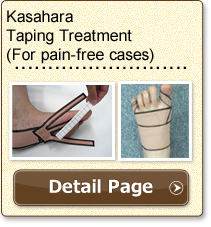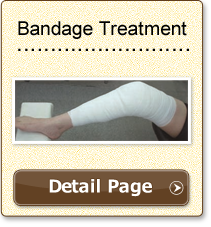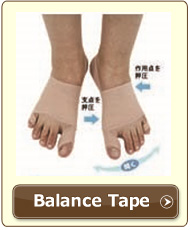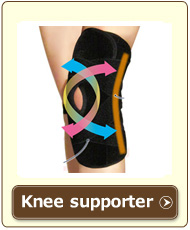Dull pain deep inside the shin
(Shin splints)
Condition

Shin splints cause a dull pain deep inside the shin when running or landing after a jump, especially prevalent to people who play basketball, soccer or baseball. When an x-ray shows an abnormality on the lower leg bone, it is diagnosed as a “lower leg fracture” and when abnormality is not visible on X-ray, it is often diagnosed as shin splints.
Cause
Shin splints result from an imbalanced sole such as bunion and they have less ability to perform seismic isolation. A lower leg fracture is either categorized as a tibia fatigue fracture caused by jumping (excessive shock) or a fibula fatigue fracture caused by running (excessive torsion). As the degree of sports injury is higher in the former, it is necessary to handle properly. The pain would last more than 1 year otherwise.
Because early and middle stage fatigue fractures are not visible on an X-ray, there are many cases that are overlooked and thus worsen.
It is important not to overlook tenderness on the damaged bone as well as hypertrophy of bone cortex.
Late stage fatigue fractures have localized tenderness and visible swelling, which is painful even when walking, resting and sleeping at night. At this stage, it is different from shin splints, and hypertrophy of bone cortex and formation of callus are visible on an X-ray.
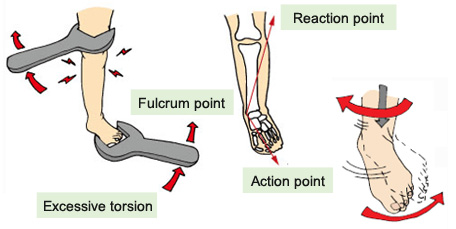
Treatment
When the damage is not visible on an X-ray, it is better to stop playing sports and to bandage the leg from the foot joint to above the knee. In addition, the Kasahara Taping Treatment (for pain-free cases) helps the toes kick straight and to prevent the tip of toes from rotating outwards. 3 toe-socks can be used as a substitute.
To protect the injury from excess shock and torsion waves, use the seismic isolation insole (artificial muscle insole).
For later stage fatigue fractures, it is necessary to set the leg with a plaster cast or brace for 2 to 3 months. Please see a specialist for advice.
Once the pain subsides, we recommend a slow return to sports practice after adapting to “3 point walking” with toes firmly grounded and train plantaris muscles to avoid a relapse.
Related products

